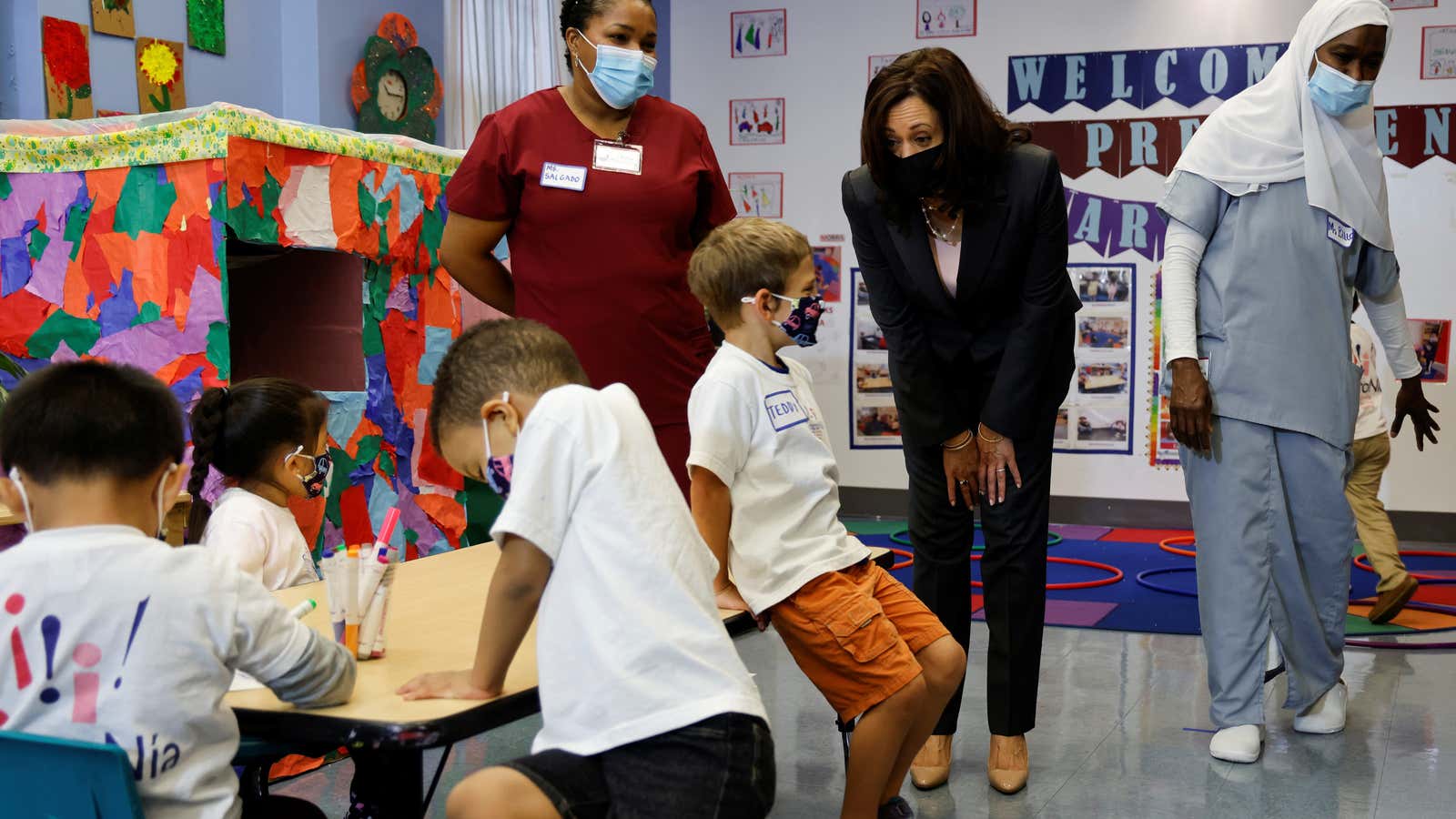Families around the US are getting an economic boost today as the federal government issues the first of its updated Child Tax Credit. It’s now formulated as monthly automatic direct payments to most families in the US with children under 18. It was included as a key anti-poverty measure in the Biden administration’s coronavirus relief bill—the American Rescue Plan—that became law in March. The Internal Revenue Service (IRS) is distributing the money to taxpayers based on recent income tax filings. That means some of the most in need of the money could miss out.
The credit this year is greater than what parents used to claim on their annual tax returns, and for the first time the money is being sent directly to people in monthly installments between July and December. Previously it would be paid as (less any owed taxes) as part of annual tax refunds. But for those who didn’t have a high enough income to file federal taxes last year, the IRS is missing information about their children in its systems.
The largest populations of children at risk of missing the credit tend to be concentrated in cities, and represent up to 5% of states’ youth populations. The distribution tracks with overall poverty rates across the US which are higher in the South. It offers a partial view of US childhood poverty, which this measure is designed to help alleviate. As of 2019, 14% of children in the US lived below the poverty line.
Families at risk of not receiving child tax credit
Just over 90% of US families can receive some amount of the credit, but the IRS has estimated that there are 2.2 million children at risk of getting passed over because they haven’t been claimed as a dependent on a recent tax return. These “non-filer” families are still eligible for the money, but must register to get paid.
In June, the IRS released a tool allowing people to sign up for the tax credit. This is modeled after the similar effort to get economic stimulus payments to atypical taxpayers during the pandemic. Registrations from the first effort will also be used to distribute child tax credit payments, so some portion of the parents may be covered.
“Before, it would really be a hassle to try and get ahold of these folks,” says Francine Lipman, a law professor at the University of Nevada, Las Vegas who has studied the Child Tax Credit. “But because of this covid crisis and Congress’ response, the IRS is set up to deal with this population in a way that it never has been before.”
Reaching the most vulnerable families
The IRS sent out letters to 36 million families—composed of a wider population eligible for the benefit (including those who did file previous returns)—and also called on community organizations to help reach people who could be slipping through the cracks. In June and July, the IRS held free tax-prep events in 12 cities including Atlanta, Detroit, Houston, New York, Los Angeles and, Miami to publicize the credit and help residents sign up for it.
Lipman also believes that once the payments begin to hit peoples’ bank accounts, word of mouth will be an effective marketing tool. For people wary of sharing information with the government, the endorsement of a friend could make the difference between receiving the money or going without it.
“This money is going to stimulate the economy” says Lipman, “it’s going to help local businesses.”
Correction (July 16): A previous version of this post misidentified the maximum age of children eligible for the benefit.
